This feature is deprecated
These are the settings you need to configure in Shopify itself.
First you will need to set up your Shopify settings for your Shopify store. Log into your Shopify account and review the settings. From the sidebar select the Settings link to go to the Admin settings.
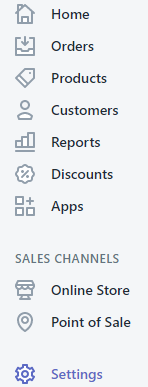
You should now see a dashboard where you can select the setting to update.
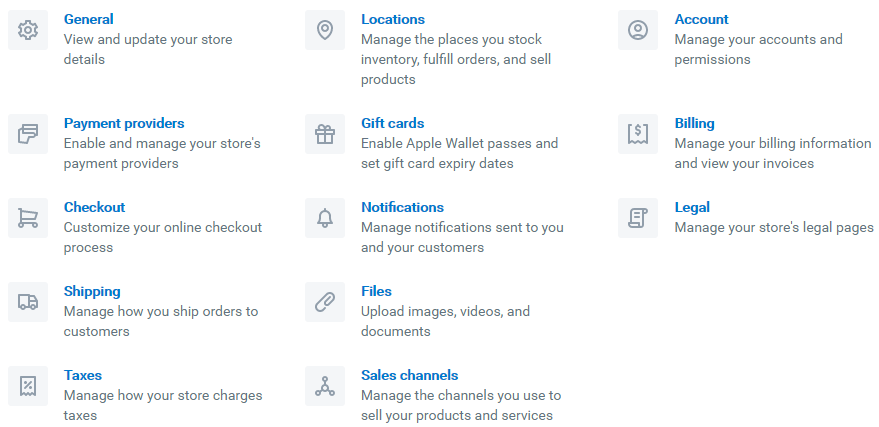
General settings
About Your Store
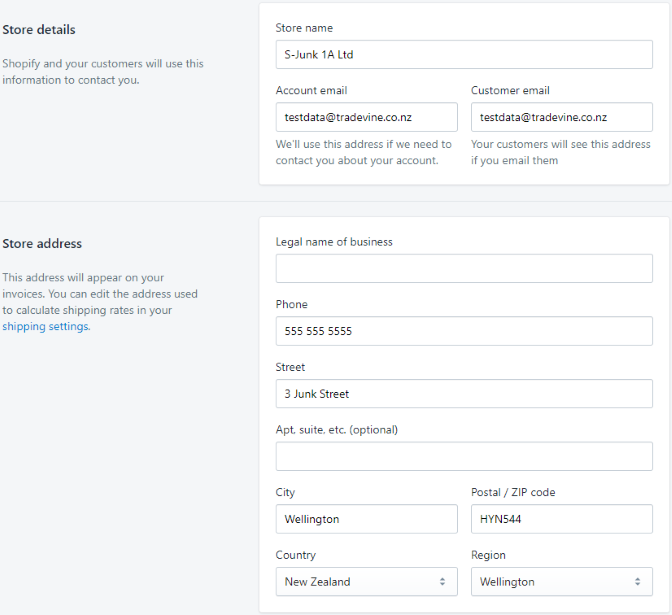
Store name: The name of your online store.
Account email: Email used for Shopify to contact you about your account.
Customer email: Customers will see this email when you contact them.
Phone: Your phone number, leave empty if you do not wish to publish a phone number.
Address: Your address details (Street, City, Postal/Zip, Country, Region) are recorded here.
Adjust your Standards and Formats
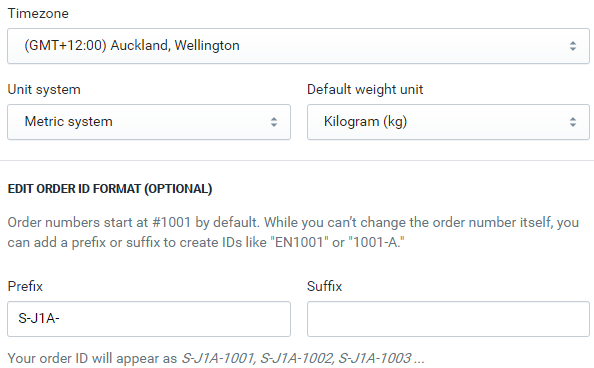
Timezone must be either (GMT+12:00) Auckland or (GMT+12:00) Wellington.
Unit system as you prefer, metric is appropriate for New Zealand.
Order ID format must NOT be the same as the sales order IDs you use in Tradevine, so give it a different prefix. You can find the sales orders prefixes in Tradevine under Settings -> Auto Numbering (the standard Tradevine setting is ‘SO’).

Store currency must be New Zealand Dollars (NZD).
Payment Providers
There are a number of payment options such as PayPal, DPS, Google Checkout etc, set these as appropriate following the Shopify instructions.
If you wish to accept bank transfers then a custom method is required:
- Go to the Manual payment methods panel.
- From the dropdown select Create custom payment method.
- Give it a name like Bank Deposit and enter the instructions text that you want your customers to follow, making sure you include your bank name, account name and account number.
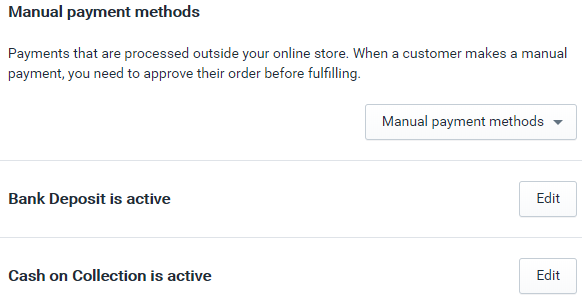
If you configure any of your custom payment methods with the term cash, then the sales orders will be created in Tradevine with a Payment Method of Cash. Eg. Cash on Delivery.
Checkout
Set the Customer accounts section as you prefer.
Order Processing
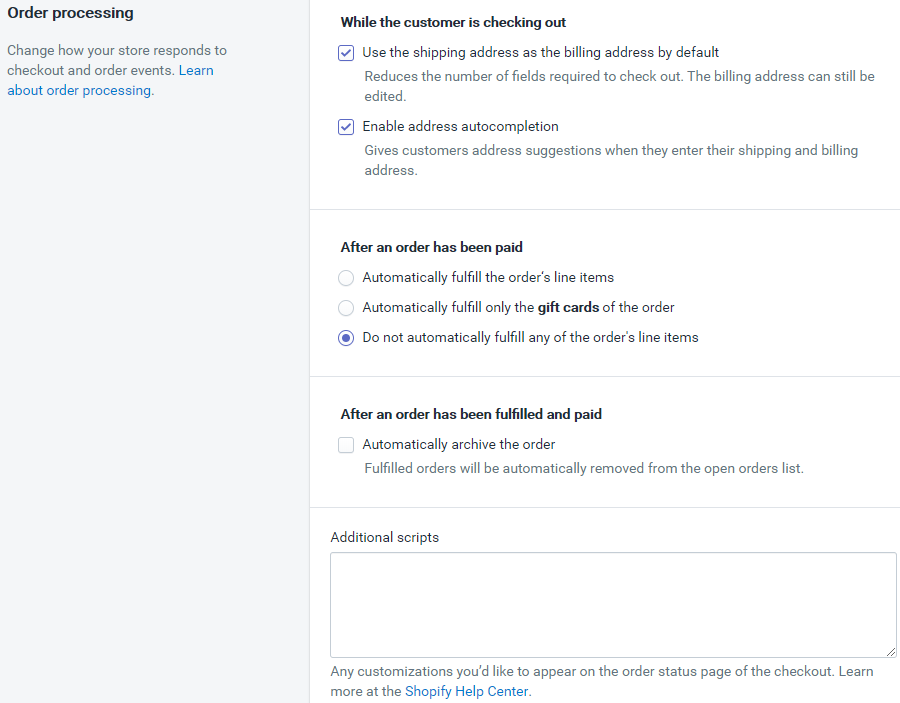
Set the following fields as you prefer:
- Use the shipping address as the billing address by default
- Enable address autocompletion
Set After an order has been paid to Do not automatically fulfill any of the order’s lines items.
Do Not check Automatically archive the order (as Tradevine does this).
Checkout Language
This will probably default to English, but check the language you wish to use when your buyers checkout. Select Manage checkout language to change your language.

Shipping
Shipping rates can be based on either price or weight.
Note: if a weight based rate is selected then your products will need a weight defined in Tradevine. Plus ensure your maximum weight for your weight-based rates, is higher than your heaviest product. If your weights are defined in Tradevine to two decimal places then ensure your weight rates are consistent and also use two decimal places in Shopify.
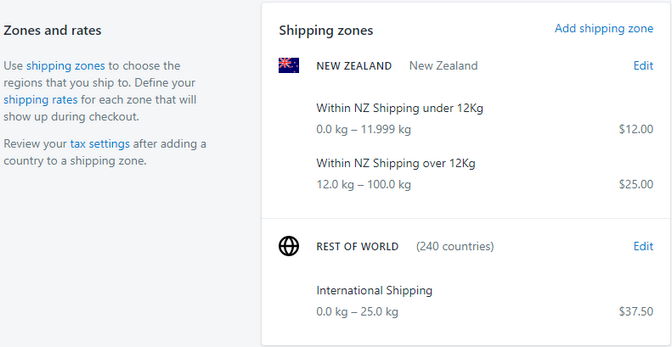
If you cater for pickups, then you should set up a shipping rate that includes the word collection. This should be price based and have a price of zero.
Note: because the free shipping rate is the cheapest rate, it will be the defaulted shipping rate when buyers create a new order in Shopify.
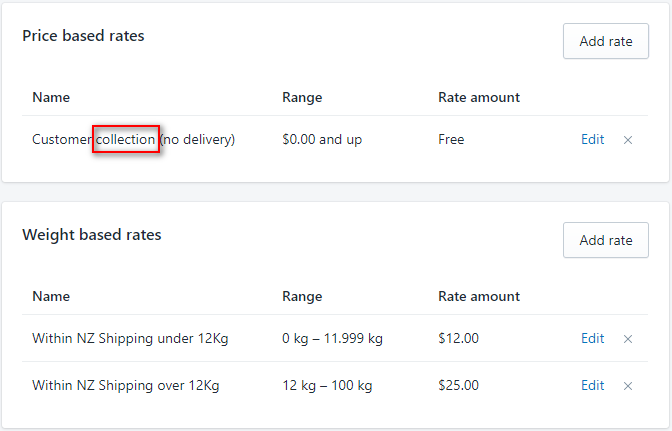
Taxes
The following tax set up applies to selling in New Zealand. If you wish to sell outside of New Zealand then refer to this Shopify page to work around the issue of excluding the GST.
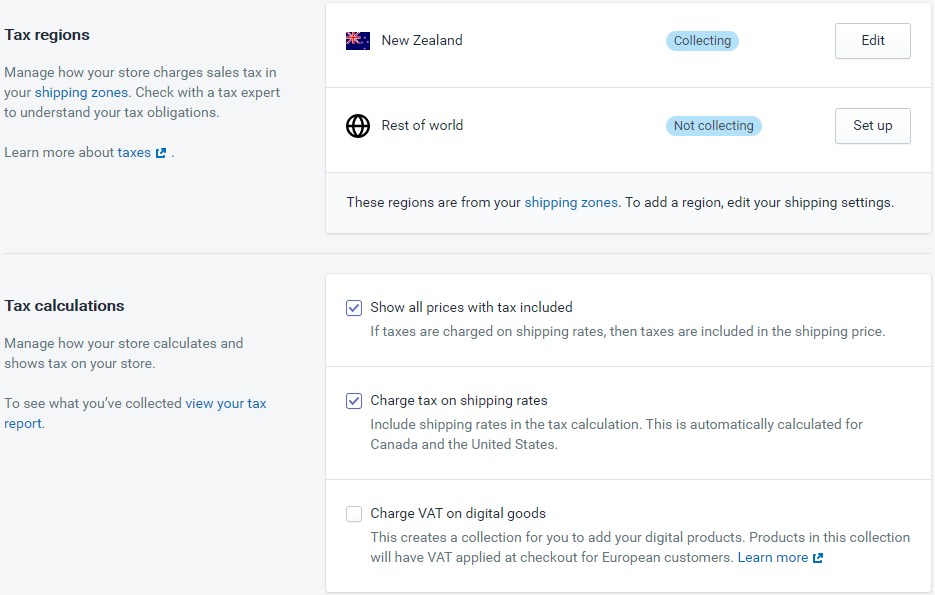
Providing you set the timezone, New Zealand should already be set up for you.
Select the Edit button and check tax is set to 15%. Leave the regional rates at 0. Any reference to federal tax is the equivalent of New Zealand GST and is already applied to each region (The USA has the concept of separate taxes for each State, but NZ does not).
Rest of world should be set to Not collecting as in no tax to collect.
Show all prices with tax included must be Checked.
Charge tax on shipping rates must be Checked.
Notifications
These are your email notifications.
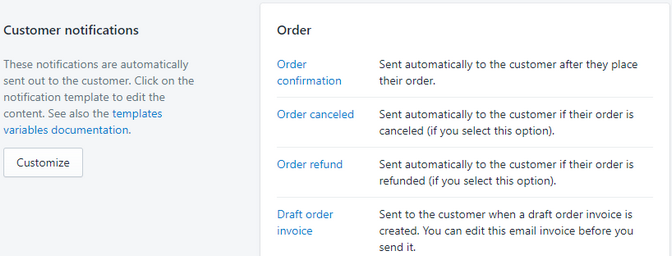
You can edit and preview each of the emails by selecting the template link for each email.
Variables (Content placeholders) can be added to the content of your emails. Variables are basically text/placeholders linked to specific data content like your shop name etc. If you do add variables to your template then ensure you follow Shopify’s strict formatting of a variable, including the spaces, double curly braces and the exact spelling.
Webhooks
It is vitally important that these are not modified unless instructed by Tradevine.
Unsupported API calls
If you have received an email from Shopify about unsupported API calls you will need to make a small change:
- Log in to your Shopify account and go to Settings (at the bottom of the sidebar on the left), Apps and sales channels and Develop apps
- Click on the installed app
- Click the Configuration tab
- Click the Edit button in the Admin API integration section
- Scroll down to the Webhook subscriptions section and find the select box named Event version
- Click the Event version dropdown and choose the version that has the word Latest in brackets after it

- Scroll down and click Save.
Legal
This is where you set up your policies for refunds, terms of service and privacy.
Domains
If you have additional domains, then set these up via Sales Channels > Online Store > Domains.

Follow the Shopify instructions for adding your own domain. If you do not have a domain then please contact Tradevine Support and we’ll help you organise one.
Google Analytics
If you optionally want to set up Google Analytics, it‘s really easy to configure.
Navigate out of Settings and then into Sales Channels > Online Store > Preferences.
If you don’t have a Google Analytics account you can set one up at http://www.google.com/analytics/

Google Analytics code: Can’t find your UA-xxxx-x number? Then read the Shopify Google Analytics Guide.